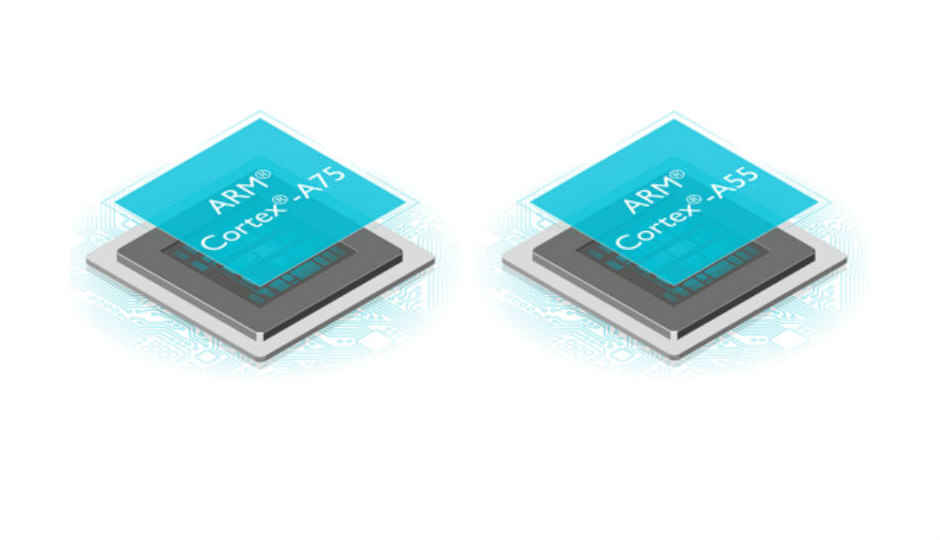

Here’s how things work in the mobile processor universe: Behind every smartphone chipset you see today, is a British company called ARM. So, when ARM says its new chipset designs are more powerful and efficient, that essentially gives everyone (OEMs and chipset makers alike) a chance to say the same. Samsung’s 2017 versions of Mongoose cores and Qualcomm’s newest Kryo designs are based on a custom Cortex A73/72 design, while the low power Kryo cores on Qualcomm’s new Snapdragon 660 chipset are based on ARM’s Cortex A53 designs.
ARM doesn’t sell its own chipsets, it sells intellectual rights to micro-architecture designs. Companies like Qualcomm, MediaTek and even Apple take that architecture and make their own changes to the same (with ARM’s permission) to come up with Kryo, Helio, Mongoose or even Apple-Ax chipsets. When you see a smartphone with Cortex-A cores, it means ARM has designed the cores and they have been used just as ARM envisioned it.
So, yesterday’s announcements about ARM’s new Cortex A75 and Cortex A55 designs are significant for the mobile universe, including automotive technology, IoT and more. ARM promises improvements with these new designs and says they’re designed with AI computing in mind.
Cortex A75
At the helm of ARM’s new portfolio resides the Cortex A75 chipset. It’s an improvement over the Cortex A72 and A73 designs of yesteryears. ARM says the new design is 22% and 40% faster than the Cortex A73 and 72, respectively. The company promises better memory workloads and higher integer and floating point performance on the Cortex A75, which is ARM’s “most powerful Cortex-A processor” till date.
Photo Credit: ARM
The Cortex A75 shows better performance in terms of instructions per cycle, while it supports an added L3 cache, thanks to new architecture support (that we’ll talk about soon).
Cortex A55
Keeping in tune with the “most powerful” trend here, the Cortex A55 is the most powerful mid-range design ARM has come up with so far. However, unlike the Cortex A75, the ARM’s A5x series are focused on efficiency over raw power. The company says the A55 is 18% more powerful and 15% more efficient than the A53. Essentially, what ARM is saying here is that it’s trying to deliver more power through this chip, while consuming the same amount of power as the cortex A53. Hence, overall power produced to consumed ratios increase.
Photo Credit: ARM
ARM says there’s an improved data prefetcher on the Cortex A55, which should produced noticeable improvement in practical performance. Prefetching refers to a processor’s ability to fetch data from its stored location before it is actually needed. This prefetcher, on the A55, can fetch data from L1 and L3 caches (remember this). The Cortex A55 also has an integrated L2 cache, offering 50% lower latency, according to ARM.
DynamIQ
All of the above was essentially a set of numbers that may or may not pan out. Impact on future devices is of course dependent on much more than just the chipset architecture. And one of those things is how these designs are employed.
Five years ago, ARM announced its big.LITTLE architecture, which pretty much rules the roost on mobile devices today. The ability to club low and high power core clusters together was a big step in chipset design. ARM’s big.LITTLE architecture is used in literally every chipset you see today. And with the Cortex A75 and A55 architectures, the company is bringing the next generation of that design.
Photo Credit: ARM
To understand this, we must discuss how big.LITTLE works: Quad core chipsets are usually made using four CPUs (also called core) of a particular type. So, a high-end quad-core chipset can have four Cortex A7x cores, or four Cortex A5x cores and so on. It can also have two dual-core clusters, including Cortex A5x designs each.
With the advent of octa-core CPUs, big.LITTLE became even more important. Here, a chipset can have four Cortex A7x cores for power hungry tasks, while simpler tasks can be performed by four other Cortex A5x cores. Similarly, there can be a hexa-core Cortex A5x cluster and a dual-core Cortex A7x cluster. Of course, one can choose eight cores of one type as well, but they’ll be hamstrung, either in terms of power or efficiency.
The possibilities are many, although the Cortex A7x series remains the performance cluster and A5x remains the efficiency cluster. Manufacturers also have to choose compatible cores only. So, if a Cortex A73 is incompatible with a Cortex A53 (speaking hypothetically), you can’t use them together.
This changes with DynamIQ architecture. Support for DynamIQ makes the Cortex A75 and A55 much more scalable than ARM’s chipsets have ever been. Now, manufacturers can put single CPUs amidst others, meaning an octa-core chipset can now have one Cortex A75 core and seven A55 cores. The number of combinations possible are substantially increased. A manufacturer can even have two quad-core clusters, where each cluster has two Cortex A75 and two Cortex A55 cores.
Of course, employing the Cortex A75 design also increases prices, meaning this isn’t a complete solution just yet. However, you’re essentially looking at the possibility of much more powerful mid-ranged smartphones.
Bottomline: Faster mid-ranged smartphones
Which brings us to the conclusion of what ARM’s done this year. On the face of it, the Cortex A75 and A55 are not revolutionary, but support for DynamIQ could possibly be so. It won’t affect the flagship class much, but mid-ranged devices (those price in the Rs. 15-30k range) could benefit greatly.
Chipsets like the Snapdragon 650, 652 and 653 have been used quite effectively in the mid-range, and all of them use cortex A72 clusters. With DynamIQ, manufacturers can start using a few Cortex A75 cores in lower end chipsets, at the same level as the Snapdragon 625.